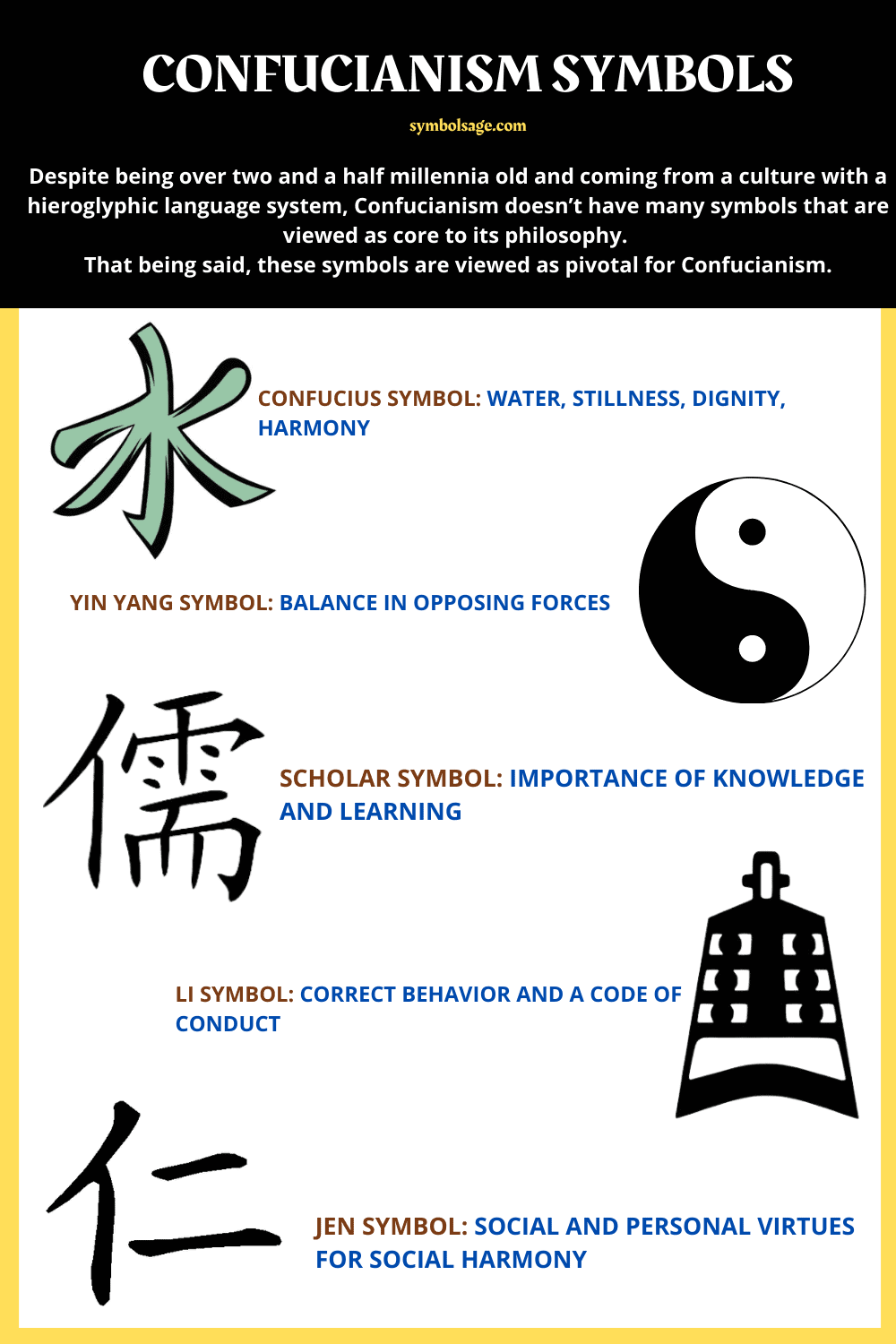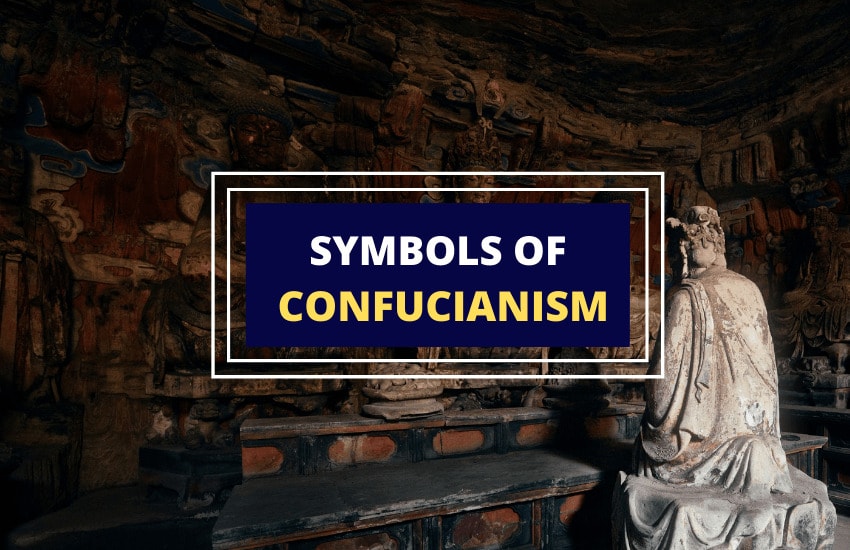
Table of Contents
Confucianism or Ruism is one of the oldest philosophical traditions on the planet and is often even regarded as a religion in and of itself.
Established between the 6th and 5th century BCE, Confucianism is centered around the teachings of the famous Chinese philosopher Confucius.
The main focus of this philosophy or religion is the strive for finding balance in life through the veneration of one’s ancestors and traditions.
As such, one would assume that Confucianism is ripe with countless visual symbols, right? Not necessarily.
The Most Popular Confucian Symbols
Despite being over two and a half millennia old and coming from a culture with a hieroglyphic language system, Confucianism doesn’t have too many symbols that are viewed as core to its philosophy.
The main reason for that seems to be this philosophy’s intent on spelling its tenets and views plainly and literally in a written form.
The followers of Confucianism follow its thoughts and writings and don’t look for individual symbols to worship – at least not as much as the followers of most other religions and philosophical traditions.
It’s said that Confucius always feared that if he made a particular symbol for his teachings, then his followers would follow and worship that symbol, and pay little attention to the teachings behind it.
As a result of that, there are only a few notable Confucianism symbols we can point to today. Most of these are fairly difficult to read and interpret.
That being said, these symbols are viewed as pivotal for Confucianism.
1. The Confucius Symbol
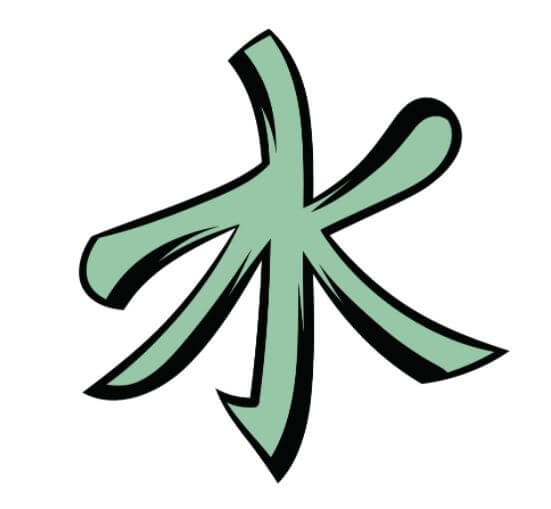
This rather rigid-looking symbol is the Chinese symbol for water. Water is an important element of life, which allows all things to grow and thrive. It’s associated with winter and with stillness.
The water symbol is used to express tranquility and dignity in your own life as well as peace and understanding with your neighbors.
As such, this symbol expresses the main goals of Confucianism, which this philosophy aims to achieve through a universal adherence to tradition and ancestral worship.
This symbol is also commonly used in wedding ceremonies in China, as it represents the harmony between the newlyweds.
2. Water

The water ideogram is very popular in Chinese culture in general, and not just in Confucianism. One of the Five Elements, Water is viewed as the Source of Life.
In Confucianism, however, it has the added meaning of peace, balance, and tranquility, all of which represent the true goal of this philosophy.
It’s also simple, natural, and flexible, which aligns with the principles and teachings of Confucianism.
3. Yin Yang
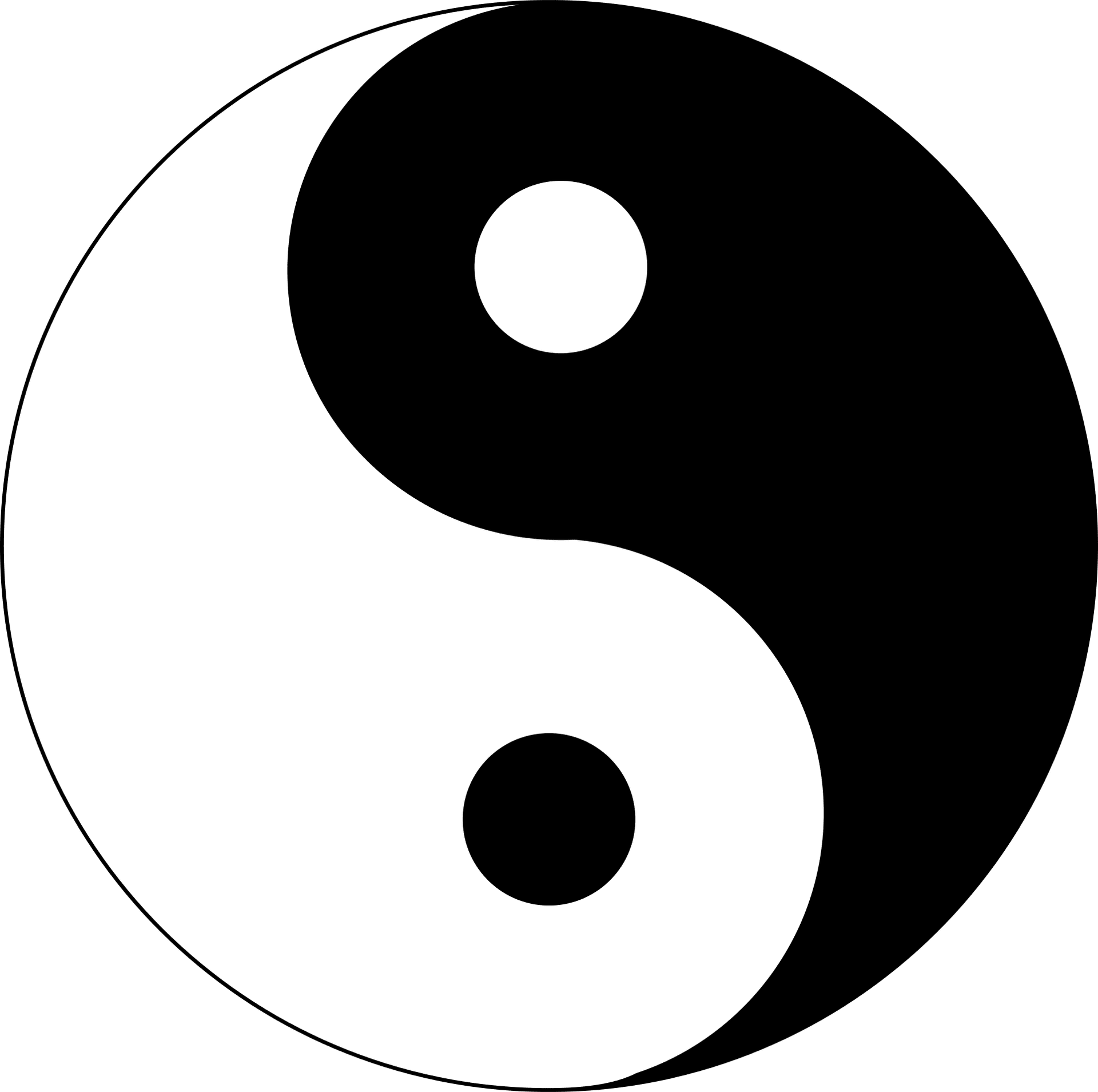
More commonly viewed as a Taoist symbol, the Yin Yang symbol is also used in Confucianism. It symbolizes the same thing in both religions – the balance in life between opposing forces.
The symbol represents duality and is portrayed as a circle divided into two halves, one black and the other white. Each half contains a dot of the opposite color.
4. The Scholar Symbol
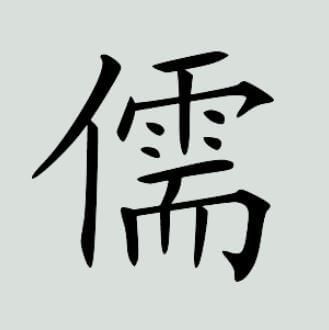
This is another common symbol in Chinese culture that’s especially – but not exclusively – associated with Confucianism.
The Scholar symbol expresses the importance of knowledge and self-awareness, both of which are essential if one is to truly achieve balance within themselves.
The focus on knowledge in Confucianism is one of the main reasons why people in China have always placed a great deal of value on education.
5. The Jen
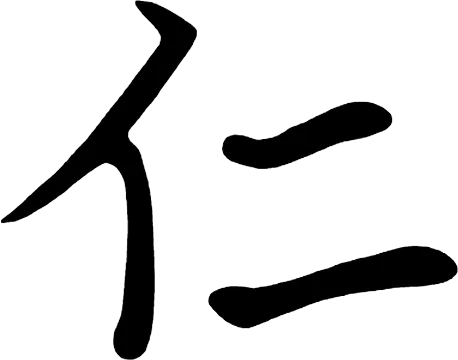
This ideogram symbol literally translates as a social virtue. It includes all personal virtues that help us achieve and maintain social harmony around us.
Righteousness is also included in Jen as Confucianism doesn’t just seek social harmony for its own sake, but accents the need for such harmony to be based on truth and righteousness.
6. The Li

The Li symbol represents correct behavior, as in good manners, respect, politeness, and adherence to social etiquette.
Regular worship is also included here as it’s a crucial part of social etiquette. According to Confucianism, every member of society should practice the principles of Li.
In Brief
Confucianism has no official symbol, but the above represent its ideals, values, and tenets, such as harmony, peace, simplicity, and naturalness.
Similar Articles:
What Are the World’s Largest Religions?
List of Religions in China – What You Need to Know
